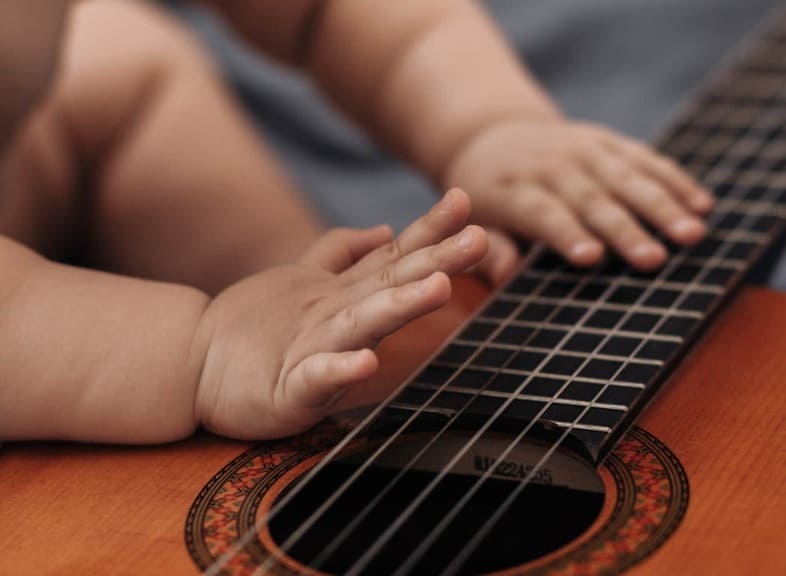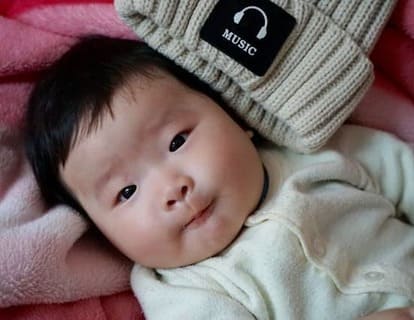Role of Music in Infant Brain Development
Ever noticed how a lullaby can calm a crying newborn in seconds? That “magic” is measurable brain chemistry. In the first 1,000 days of life, neurons connect at 1 million per second, and music is one of the few everyday experiences that can speed those connections up. With streaming apps offering “Mozart for babies” 24/7, parents need to know what really helps; and what’s hype. This post translates the latest neuroscience into plain language and gives you five concrete ways to use music for language, motor, and social skills; before the first birthday.

Background & Context
Mothers have sung to infants for centuries, but only since the 1990s have fMRI and EEG studies watched babies’ brains while music plays. Key finding: musical processing lights up more widespread regions than speech, including areas later used for math, empathy, and spatial reasoning. The American Academy of Pediatrics now lists “daily interactive music” alongside reading and tummy time as a core early-learning activity; yet many parents still treat it as background noise. Music engages multiple brain regions simultaneously; processing rhythm activates motor areas, melody stimulates auditory pathways, and emotional responses light up the limbic system. For infants, whose brains are exceptionally plastic and receptive to environmental input, musical experiences provide rich, multisensory stimulation that supports this neural growth.
Core Sections
Why Music Matters: The Science in 90 Seconds
- Rhythm trains the auditory brainstem to parse speech sounds → predicts later reading.
- Melody triggers dopamine & oxytocin → bonding and mood regulation.
- Synced movement (rocking, clapping) stimulates the cerebellum → motor planning.
Bottom line: Music is a whole-brain workout when the brain is easiest to sculpt.
Research into music and infant development has expanded dramatically over the past two decades. Scientists now understand that babies are born with innate musical abilities; newborns can distinguish between different rhythms and pitches, and they show preferences for certain musical patterns. This suggests our brains are evolutionarily wired to process and respond to music, making it a natural tool for supporting healthy development.
Musical experiences strengthen connections between brain cells, particularly in areas responsible for language, memory, and spatial reasoning. When infants hear music, their auditory cortex processes the sounds while simultaneously engaging regions that handle pattern recognition and prediction. This multi-region activation promotes neural integration; the brain’s ability to coordinate information across different areas.
Studies using neuroimaging have shown that babies exposed to regular musical activities display enhanced neural responses compared to those with limited musical exposure. Even passive listening activates numerous brain regions, but interactive musical play; such as bouncing to rhythm or playing simple instruments; creates even more robust neural activation.
The temporal precision required to process rhythm particularly benefits the brain’s timing networks. These same networks support speech processing, as language relies heavily on detecting rhythmic patterns and timing differences. This overlap explains why musical training in early childhood often correlates with stronger language skills later.
Cognitive Development Benefits
Music supports several key cognitive domains critical for infant development. Research indicates that musical activities enhance:
- Memory and Attention: Repeated melodies help infants learn to recognize patterns and anticipate what comes next, building working memory capacity. Musical games that require attention to different instruments or sounds strengthen focus and selective attention.
- Spatial-Temporal Skills: Processing music requires understanding how sounds relate in time and space. These skills transfer to mathematical reasoning and problem-solving abilities. Infants who engage with music show improved performance on spatial reasoning tasks even in their first year.
- Executive Function: Following rhythms, waiting for musical cues, and coordinating movements to music all require self-regulation and impulse control; early foundations of executive function that predict academic success later in childhood.
Language and Communication Enhancement
The connection between music and language development is particularly strong. Both rely on processing pitch, rhythm, timing, and sequential patterns. When parents sing to their infants, they naturally exaggerate pitch contours and slow down their speech; elements that help babies segment words and understand language structure.
Musical activities expose infants to a wider range of phonetic sounds and pitch variations than typical speech. This expanded auditory experience strengthens phonological awareness, which is crucial for later reading development. Babies who regularly experience music often reach language milestones earlier, including babbling, first words, and sentence formation.
Rhythm plays a special role in language acquisition. The rhythmic patterns in songs help infants detect word boundaries and grammatical structures. Nursery rhymes, with their predictable rhythms and rhyming patterns, are particularly effective at supporting phonological memory; the ability to remember and manipulate speech sounds.
Windows of Opportunity: 0–6 vs. 6–12 Months
| Age Range | Neural Milestone | Action Point |
|---|---|---|
| 0–6 mo | Discriminates all musical intervals | Rotate genres (classical, reggae, gospel) to keep synapses flexible |
| 6–12 mo | “Perceptual narrowing” prunes unused pathways | Reinforce family culture plus global sounds |
Passive Listening vs. Active Making
2019 McMaster experiment – 6-month-olds:
- Group A listened to Baby Einstein CDs 20 min/day.
- Group B drummed while caregivers sang.
Result after 6 weeks: Group B showed stronger neural pitch responses and earlier babbling.
DIY tools: pots, wooden spoons, rice-filled containers.
Playlist Prescription: Tempo, Key, Volume
- Tempo: 60–80 BPM mimics prenatal heartbeat → calms faster.
- Key: Alternate major (uplift) & minor (soothe) to teach emotional range.
- Volume: Keep ≤ 50 dB (conversation level); ≥ 70 dB can damage immature hair cells.
Pro tip: Create a 3-song ritual for each routine; wake-up, play, nap; to cue predictable transitions.
Common Pitfalls to Skip
❌ “Mozart-only” myth – any emotionally rich, structured music works.
❌ Screen karaoke under 18 mo – linked to language delay unless co-viewed.
❌ Hours of background pop – causes overstimulation; 15 focused minutes wins.
Practical Tips (Printable Checklist)
- Lullaby Lyric Swap – sing same tune, change words nightly (“Goodnight toes…”) → vocabulary boost.
- Diaper-Change Drum – tap steady beat, let baby watch then pat → rhythm practice.
- Move with Meter – sway for triple-meter lullabies, bounce for duple-meter play songs.
- Soundtrack of the Week – Afro-beat, Celtic, K-pop → widen auditory maps.
- Call-and-Response – sing short phrase, pause, smile expectantly → reinforces conversational turn-taking.

Conclusion
Music is far more than entertainment for infants; it’s a powerful developmental tool that shapes brain architecture, supports language acquisition, strengthens emotional bonds, and builds cognitive skills. The science is clear: regular, interactive musical experiences during infancy create lasting benefits that extend well into childhood and beyond. The beauty of using music for infant development is its accessibility. You don’t need perfect pitch, expensive instruments, or formal training. Your voice, your attention, and your willingness to be silly and playful are all your baby needs. Every lullaby you sing, every rhythm you clap, and every dance you share is an investment in your child’s developing brain. Start today; sing to your baby, explore different rhythms together, and make music a joyful part of your daily routine. Your child’s brain will thank you for it, and you’ll create precious memories that last far beyond these fleeting infant months.





